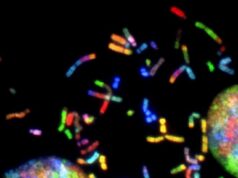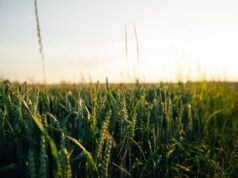For the first time, scientists have calculated the global impact of human activity on animal movement, revealing widespread impacts that threaten species survival and biodiversity.
While it has been shown that activities such as logging and urbanisation can have big impacts on wildlife, the study by scientists at the University of Sydney and Deakin University in Australia shows that episodic events such as hunting, military activity and recreation can trigger even bigger changes in animal behaviour.
“It is vital we understand the scale of impact that humans have on other animal species,” said lead author Dr Tim Doherty, a wildlife ecologist at the University of Sydney. “The consequences of changed animal movement can be profound and lead to reduced animal fitness, lower chances of survival, reduced reproductive rates, genetic isolation and even local extinction.”
The study is published today in Nature Ecology & Evolution.
The study points to a global restructuring of animal movements caused by human disturbance, with potentially profound impacts on animal populations, species and ecosystem processes.
Find your dream job in the space industry. Check our Space Job Board »
“Movement is critical to animal survival, but it can be disrupted by human disturbances,” Dr Doherty said. “Animals adopt behavioural mechanisms to adjust to human activity, such as by fleeing or avoiding humans, travelling further to find food or mates; or finding new shelter to avoid humans or predators.”
In some cases, human activity forced a reduction in animal movement, the study found, because of increased access to food in human locations, reduced ability to move from modified habitat or restrictions to movement by physical barriers.
“As well as the direct impact on animal species, there are knock-on effects,” Dr Doherty said. “Animal movement is linked to important ecological processes such as pollination, seed dispersal and soil turnover, so disrupted animal movement can have negative impacts throughout ecosystems.”
POLICY IMPLICATIONS
Dr Doherty, who started this research at Deakin University before moving to the University of Sydney, has said the findings have important policy implications for managing animal biodiversity.
“In marine environments and landscapes relatively untouched by human impact, it is important that habitat modification is avoided,” said Dr Doherty from the School of Life and Environmental Sciences in the Faculty of Science.
“This could involve strengthening and supporting existing protected areas and securing more areas of wilderness for legal protection.”
The study says it might be easier to reduce the impacts of episodic disturbances by carefully managing certain activities, such as hunting and tourism, in wilderness areas, especially during animal breeding periods.
“Where habitat modification is unavoidable, we recommend that knowledge of animal movement behaviour informs landscape design and management to ensure animal movement is secured,” Dr Doherty said.
He said that reducing negative impacts of human activity on animal movement will be vital for securing biodiversity in an increasingly human-dominated world.
“Further research is needed to better understand the impact of habitat modification on animal movement in rapidly developing parts of the world,” Dr Doherty said.
The research compiled and analysed 208 separate studies on 167 animal species over 39 years to assess how human disturbance influences animal movement. In more than one-third of cases, animals were forced into changes that saw movement increase by more than 50 percent.
Species covered in the study range from the 0.05 gram sleepy orange butterfly to the more than 2000 kilogram great white shark. There were 37 bird species, 77 mammal species, 17 reptile species, 11 amphibian species, 13 fish species and 12 arthropod (insect) species covered.
Provided by: University of Sydney
More information: Doherty, T.S. et al. Human disturbance causes widespread disruption of animal movement, Nature Ecology & Evolution (2021). DOI: 10.1038/s41559-020-01380-1
Image: Dr Tim Doherty, School of Life and Environmental Sciences, the University of Sydney. Photographed here with a sand goanna in Mallee Cliffs, NSW, Australia. Credit: The University of Sydney











